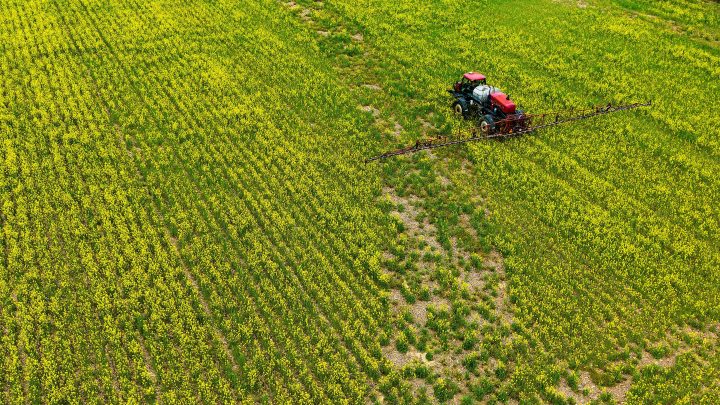
The Census of Agriculture: what it’s for, why it matters

Monday was the last day for farmers and ranchers to respond to the USDA’s 2022 Census of Agriculture.
The federal government launched the survey in 1840, when most American citizens tended farms or ranches. Now, the Department of Agriculture sends it out every five years and gets back a snapshot of the industry.
In addition to the usual questions about farmer demographics, how much farmland is in use and how much money farmers are making, there are new questions about precision agriculture, hemp production and internet access. The government will use that data to divvy up funding and make policy decisions.
Jamie Viramontes has been getting a lot of postcards from the government.
“We definitely get a lot of reminders” to respond to the long, detailed questionnaire.
Viramontes and her husband, Cole, who grow row crops in southern New Mexico, see it as an opportunity. “It’s a great way for policymakers to truly get a picture of what’s going on on farms.”
“It is the basic source for information about agriculture as an industry,” said Daniel Sumner, an agricultural economist at the University of California, Davis.
The government uses ag census data to target resources, and just about everyone else connected to the farm economy uses it to make business decisions, he said.
“If you’re thinking about where you’re gonna put your wheat-processing plant, you’re going to go to the Census of Agriculture.”
The ag census also tells us who is operating American farms. Unsurprisingly, it’s mostly white men.
But methodology changes in recent surveys show that there are more women and farmers of color than we thought, said Katie Dentzman, a rural sociologist at Iowa State University.
The profession is aging quickly. That’s why the ag census tries to identify young and beginning farmers, “so we can get an idea of who’s actually entering farming as we get these people who are going to very suddenly start aging out,” Dentzman said.
This year’s response from Viramontes Farms will show that Jamie and Cole are growing fewer heritage green chiles and more cotton.
“Any of our crops that require a lot of hand labor — it’s just not feasible to grow in a large scale anymore,” she said.
That’s because of a massive shortage of farmworkers, which she hopes the data — when it’s released next year — will reflect.
There’s a lot happening in the world. Through it all, Marketplace is here for you.
You rely on Marketplace to break down the world’s events and tell you how it affects you in a fact-based, approachable way. We rely on your financial support to keep making that possible.
Your donation today powers the independent journalism that you rely on. For just $5/month, you can help sustain Marketplace so we can keep reporting on the things that matter to you.

















